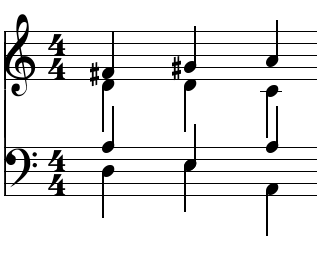Answer: The first time I looked at this I thought you were thinking of the augmented fourth that would appear in a V7-i chord change, like this:




| Augmented fourth in minor |
|
Question: I am wondering why composers use a raised fourth when moving to V during a piece in a minor key. Is it simply because the raised fourth is the leading tone to v and it strengthens the cadence/resolution? - Matthew
Answer: The first time I looked at this I thought you were thinking of the augmented fourth that would appear in a V7-i chord change, like this:
|
Return to Q&A Index
 
|